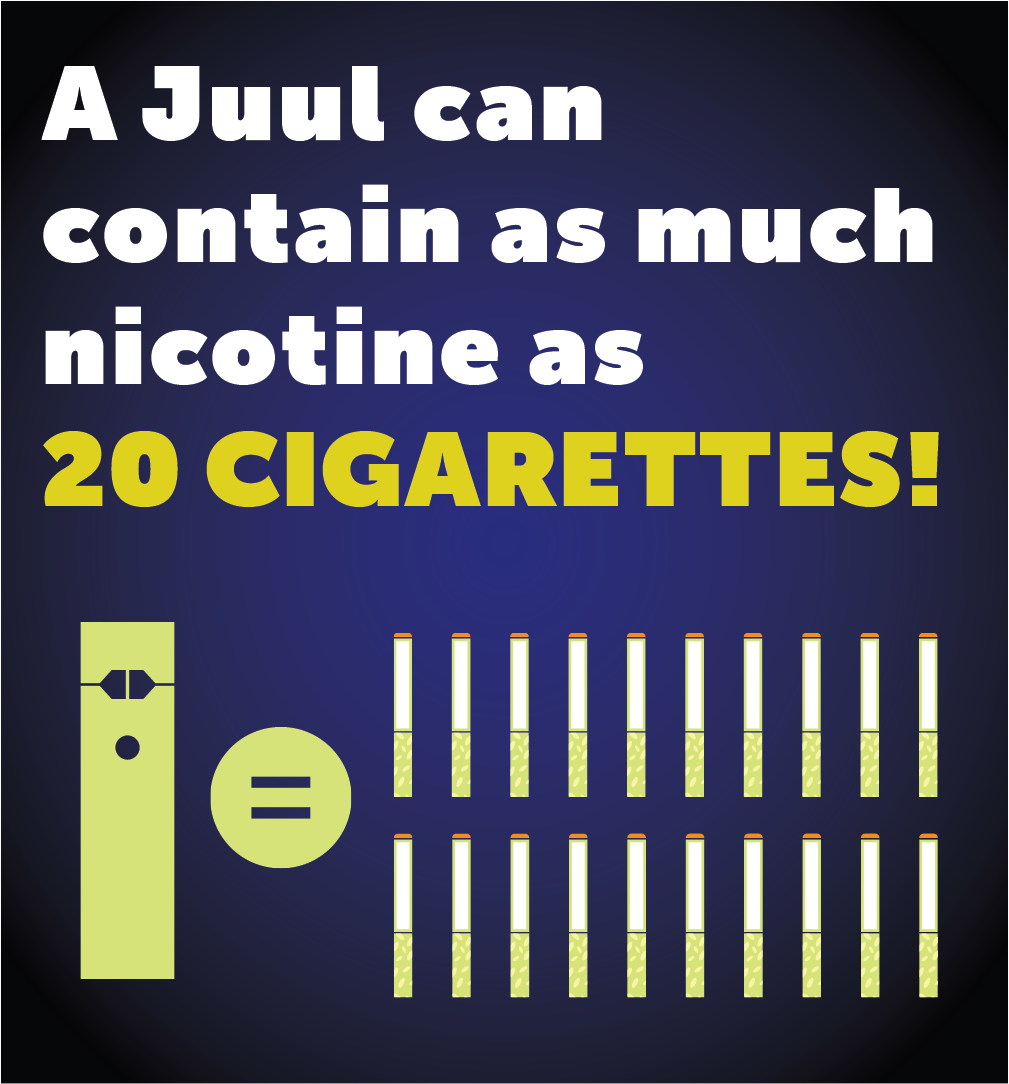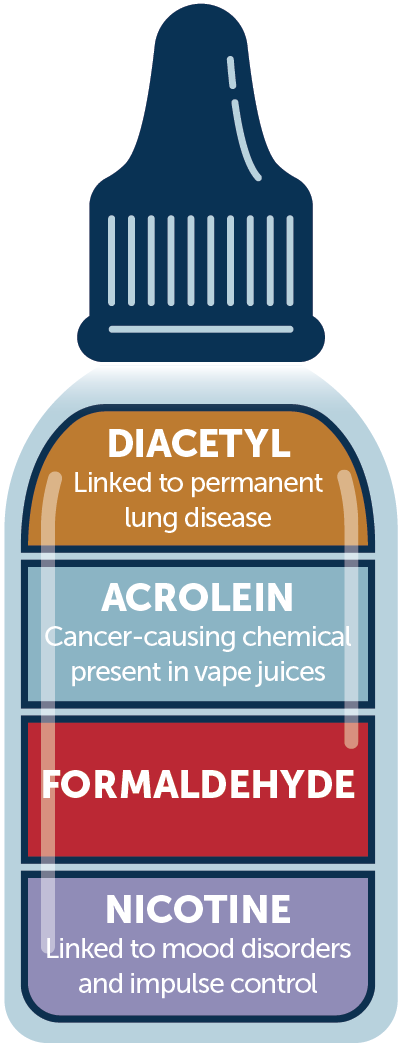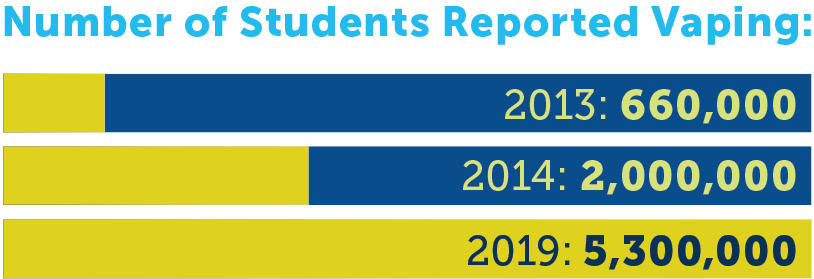Vaping: Dangerous Health Concerns

Updated December 6, 2019
Centers for Disease Control and Prevention (CDC) has identified vitamin E acetate as a chemical of concern among people with e-cigarette, or vaping, product use associated lung injury (EVALI). Most report a history of using THC-containing products. THC is the main psychoactive compound in marijuana. E-cigarette devices, or vapes, are marketed as an alternative method to quit tobacco use, so many assume the products are safe. Yet, the Food and Drug Administration (FDA) has not approved these devices for stopping tobacco use. The available science is inconclusive on the health impacts of e-cigarettes or their effectiveness for quitting smoking. Vitamin E acetate is used as an additive, most notably as a thickening agent in THC-containing e-cigarette, or vaping, products. It usually does not cause harm when ingested as a vitamin supplement or applied to the skin. However, previous research suggests when vitamin E acetate is inhaled, it may interfere with normal lung functioning.
So far, there have been reports of at least 48 deaths confirmed in 25 states, with at least 1 death in Mississippi. As of December 4, 2019, 2291 cases of e-cigarette, or vaping, product use associated lung injury (EVALI) have been reported to CDC from all 50 states the District of Columbia, and 2 U.S. territories (Puerto Rico and U.S. Virgin Islands).

Officials are advising people not to use THC-containing vaping products. The appeal of vaping for youth includes a wide variety of flavors (fruits, mints and candies), high concentrations of nicotine, and the devices are easy to conceal due to lack of odor coupled with the small size. Among these devices, Juul is a popular brand name, but the vaping device market is vast and filled with “build your own” types of devices. The CDC recently released a warning for people not to use vaping ingredients bought on the street and to stop modifying e-cigarette devices, in an effort to curb the vaping-related lung sicknesses.
Health officials, including Dr. Thomas Dobbs—State Health Officer in Mississippi, are working to find the cause of these illnesses. Some symptoms reported in this outbreak include:
- Coughing, shortness of breath or chest pain
- Nausea, vomiting or diarrhea
- Tiredness, fever or weight loss
Vapes work by heating a mixture of liquid solvents, usually containing nicotine, which is inhaled. When exhaled, a vapor is released that evaporates very quickly leaving no odor or trace of someone using a vape. The liquids contain up to 50 mg of nicotine and is not regulated by the FDA. They are also flavored with substances like glycerol and many others that are unknown. Many vape device ingredients are not listed on the products.
On top of the highly addicting aspect of vaping, these devices also harbor bacteria. Harvard researchers tested cartridges and found evidence of bacterial contamination in nearly a quarter of the products tested and fungal contamination in more than 80%.

Youth, pregnant women and adults not currently using tobacco products are urged not to start use of vaping products. Those with marijuana use disorder are encouraged to seek treatment by a health care provider to stop. Persons experiencing symptoms after using vaping products should see a healthcare provider.
The use of vaping in Mississippi is accelerating rapidly. The risk of moving to traditional tobacco use also increases for those who vape. 
To learn more about the dangerous of vaping, visit the CDC website.




 Women's Health
Women's Health Eat Healthy
Eat Healthy Exercise
Exercise Health & Wellness Articles
Health & Wellness Articles